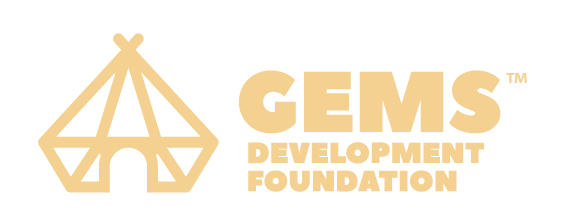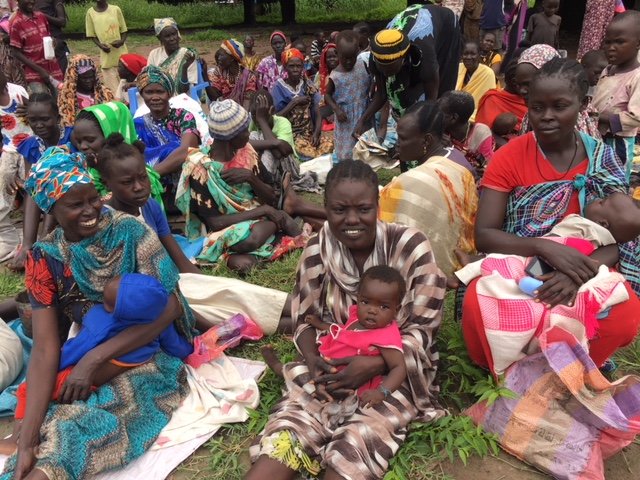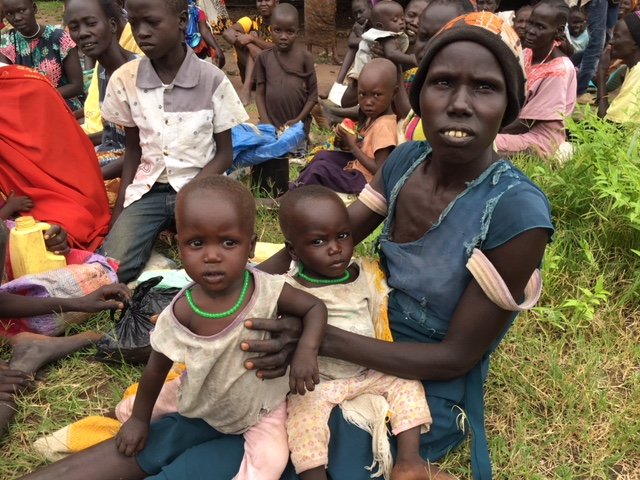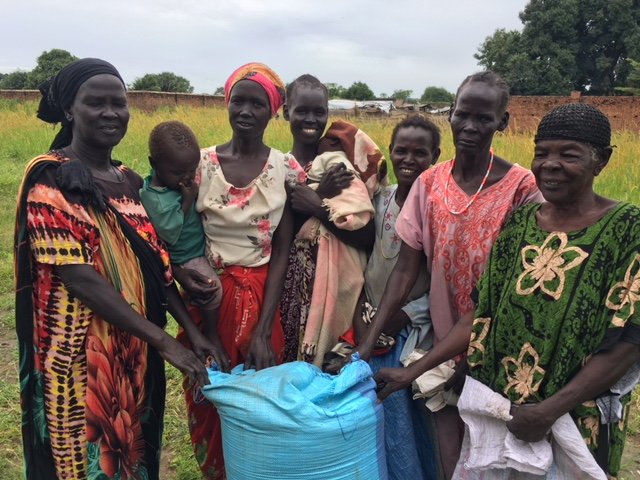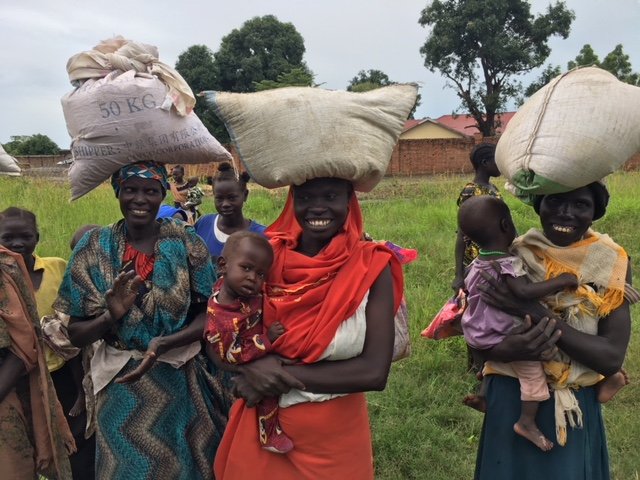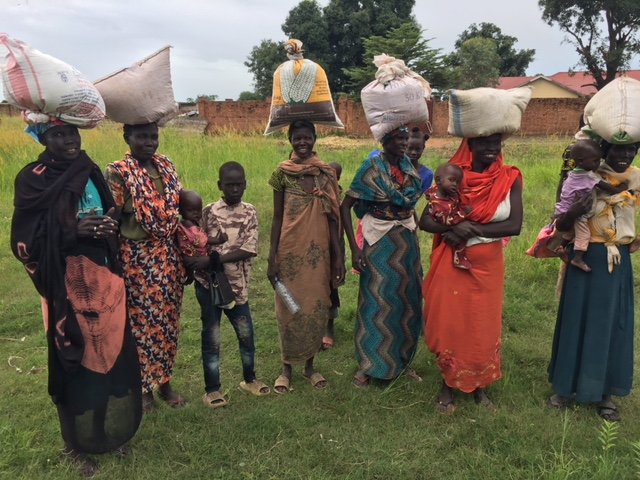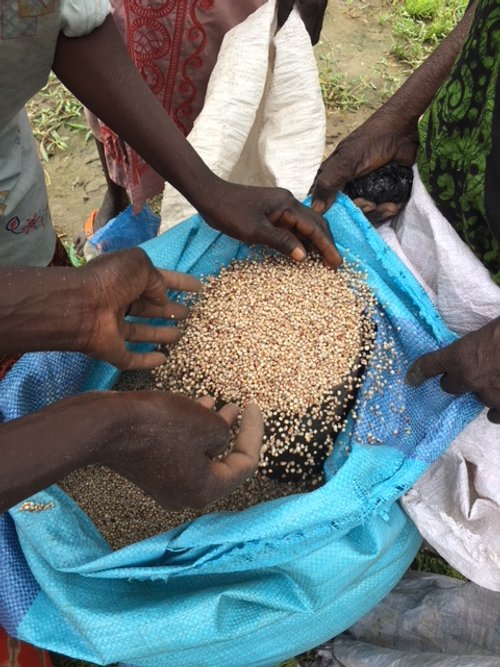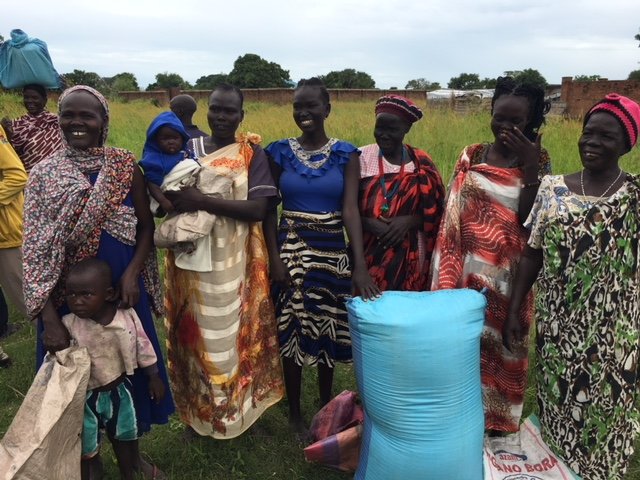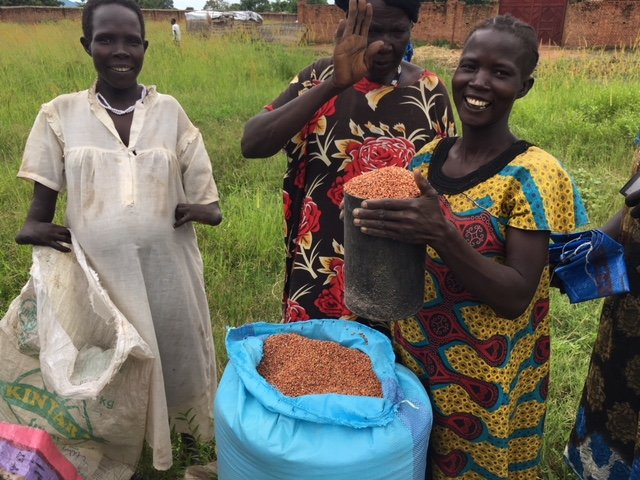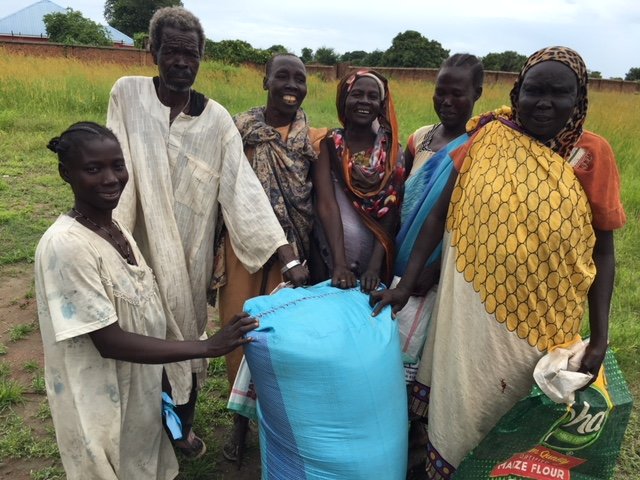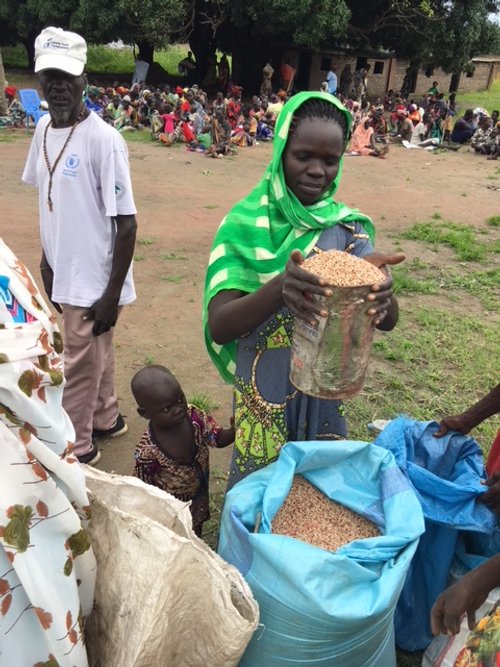The Rainy Season
The South Sudan rainy season begins in April and lasts through November. During these months, heavy rain falls daily, often resulting in flooding of land, roads, and homes. Some areas of the country receive over 50 inches of annual rainfall. For the past three years, the flooding has become more severe.
South Sudanese women survey flood damage
In South Sudan, people are currently living through the rainy season which produces what is called “The Hunger Gap”, the time between when the food from the last harvest runs out and the food from new crops become available.
A huge thank you to our GEMS donors who helped us fund another food distribution in Aweil, South Sudan! Thanks to your generous donations, GEMS Development Foundation was able to provide a one month supply of sorghum for 114 families.
Transportation is also deeply impacted by the rainy season in South Sudan. Roads become mostly impassable by vehicle due to deep mud and water from flooding.
The only paved roads in the country are in Juba, the capital of South Sudan. The remaining dirt roads are susceptible to flooding and mud, and between June and October, South Sudanese people can no longer use cars to travel.
This disruption of transportation can create difficulties in getting much-needed supplies into certain rural areas. While transport by boat is sometimes possible, it can also be dangerous and expensive.
Years of instability in the region has led to South Sudan having very limited resources for its public healthcare system. Many rural clinics run dangerously low on medical supplies when they are cut off from supply trucks coming from the city.
The lack of accessible roads during the rainy season also creates healthcare issues for people who can’t access clinics far from their homes. Seventy-one percent of South Sudan’s population lives over 5 km (3.1 miles) from a health care facility, which in walking distance could take an hour’s time minimally, given the difficult terrain. Many live much farther and have to walk for a full day or travel several hours by motorcycle over dirt roads to reach a medical facility. During the rainy season, this travel becomes nearly impossible, especially for severely ill patients or women in labor.
Recently, a pregnant woman began hemorrhaging in a local village, but due to flooding, the roads were impassable for her family to travel for help by motorcycle. Instead, several men in her family carried her on a blanket while walking for three hours through flood waters to receive help at a clinic. This is the kind of resilience that you often see in South Sudan. Thankfully, they arrived in time for both the woman and her child’s life to be saved.
Floodwaters also raise health concerns when boreholes for water pumps become submerged, causing water contamination. Standing water breeds mosquitos that spread diseases like malaria, and people standing in and living around contaminated water for months also have an increased risk of cholera. It is a double strike- flooding causes more diseases during a time when access to healthcare is disrupted by the same problem.
Livestock that are displaced by flooding add to water contamination concerns
GEMS continues to help those at risk for acute malnutrition by distributing sorghum to the most vulnerable people in the population. Our long-term goals for sustainable solutions also include a health care facility in Majak Goi, which will serve approximately 20,000 people in the surrounding areas. The clinic will be run by local physicians who were put through medical school with GEMS Development Foundation scholarship programs.
Please donate today to help us continue our important work in South Sudan.
